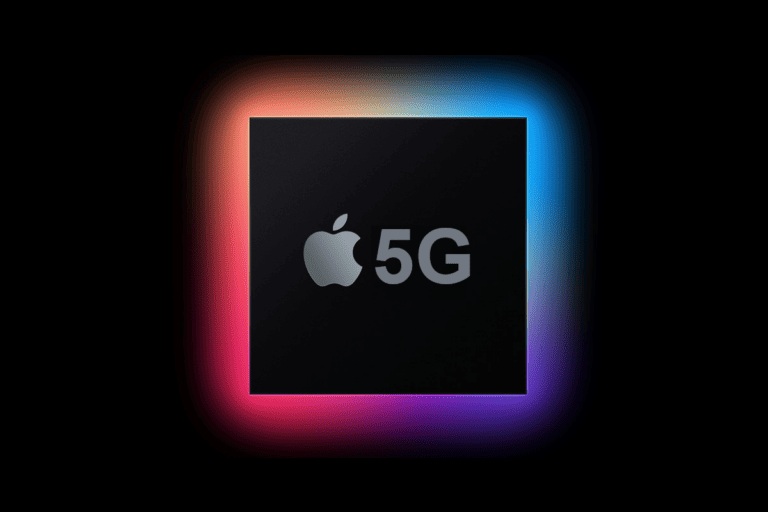This article explores Wi-Fi 7, the latest advancement in wireless technology. Wi-Fi 7, also known as IEEE 802.11be, offers significant improvements in speed and efficiency, providing data rates of up to 46 Gbps. This advancement will make activities such as streaming high-definition content, playing online games, and transferring large files more seamless and efficient. Additionally, Wi-Fi 7 maintains backward compatibility, allowing devices using older standards to connect while fully leveraging the speed advancements for those capable of using Wi-Fi 7.
What Is Wi‑Fi 7?
Wi‑Fi 7 (officially known as IEEE 802.11be Extremely High Throughput) is the seventh generation of Wi‑Fi technology, designed to deliver faster speeds, lower latency, and better performance in high‑demand environments.
It builds on Wi‑Fi 6 and Wi‑Fi 6E, but introduces major improvements that make it ideal for next‑gen applications like 8K streaming, AR/VR, cloud gaming, and smart homes.
According to Wired and Cisco, Wi‑Fi 7 can reach speeds up to four times faster than Wi‑Fi 6, with theoretical maximum throughput exceeding 46 Gbps.
⚙️ Key Features of Wi‑Fi 7
1. Wider Channels (Up to 320 MHz)
Wi‑Fi 7 doubles the maximum channel width from 160 MHz (in Wi‑Fi 6E) to 320 MHz, allowing more data to flow simultaneously.
This is especially beneficial in the 6 GHz band, which has less interference and more available spectrum.
2. Multi‑Link Operation (MLO)
One of Wi‑Fi 7’s biggest breakthroughs, MLO allows devices to combine multiple frequency bands (2.4 GHz, 5 GHz, and 6 GHz) into a single connection.
This means:
- Faster data transfer rates
- Seamless switching between bands
- Improved reliability and lower latency
For example, your laptop could send data over 5 GHz while receiving over 6 GHz — optimizing performance automatically.
3. 4K Quadrature Amplitude Modulation (4K‑QAM)
Wi‑Fi 7 increases modulation density from 1024‑QAM (Wi‑Fi 6) to 4096‑QAM, meaning it can pack 20% more data into each signal.
This translates to higher throughput — perfect for bandwidth‑intensive tasks like video conferencing and large file transfers.
4. Multi‑RU (Resource Unit) Puncturing
In Wi‑Fi 6, if part of a channel was blocked by interference, the entire channel went unused.
Wi‑Fi 7 fixes this by allowing puncturing — using the clear portions of a channel even if part is busy.
Result: More efficient use of spectrum and higher real‑world speeds.
5. Lower Latency and Better QoS
Wi‑Fi 7 introduces enhanced scheduling and coordination between access points, reducing latency to under 2 milliseconds in some cases.
This is a game‑changer for VR, gaming, and real‑time video.
📊 Wi‑Fi 7 vs. Wi‑Fi 6 / 6E
| Feature | Wi‑Fi 6 | Wi‑Fi 6E | Wi‑Fi 7 |
|---|---|---|---|
| Standard | 802.11ax | 802.11ax (6 GHz) | 802.11be |
| Max Channel Width | 160 MHz | 160 MHz | 320 MHz |
| Max Data Rate | ~9.6 Gbps | ~9.6 Gbps | Up to 46 Gbps |
| Modulation | 1024‑QAM | 1024‑QAM | 4096‑QAM |
| Multi‑Link Operation | ❌ | ❌ | ✅ |
| Latency | ~10 ms | ~10 ms | <2 ms |
| Best Use Cases | Streaming, IoT | 6 GHz expansion | AR/VR, 8K, gaming, AI apps |
🏠 Real‑World Benefits
- Ultra‑fast downloads and uploads
- Smoother streaming (even multiple 4K or 8K streams)
- Lag‑free gaming and VR
- Better performance in crowded networks (stadiums, offices, apartments)
- Future‑proofing for new devices and smart home ecosystems
🔌 Do You Need a Wi‑Fi 7 Router?
If you already have a Wi‑Fi 6 or 6E setup, you’re still in good shape — but upgrading to Wi‑Fi 7 will unlock the full potential of next‑gen devices launching in 2025 and beyond.
You’ll need:
- A Wi‑Fi 7‑compatible router or mesh system
- Devices (phones, laptops, etc.) that support Wi‑Fi 7
Manufacturers like TP‑Link, Netgear, Asus, and Qualcomm have already released or announced Wi‑Fi 7 products.
🚀 The Bottom Line
Wi‑Fi 7 is a major leap forward in wireless networking — not just faster, but smarter and more efficient.
With wider channels, multi‑link operation, and ultra‑low latency, it’s built for the connected future — powering everything from smart homes to immersive virtual worlds.
If you want the best wireless performance available, Wi‑Fi 7 is worth the upgrade.
Sources:
- Wired – What Is Wi‑Fi 7?
- Cisco – What Is Wi‑Fi 7? Explained
- PC Guide – Wi‑Fi 7 Explained
- PCMag – Wi‑Fi 7 Explained: Finally, Speed That’s Worth a Router Upgrade
Wi-Fi 7: The Next Leap in Wireless Technology
Wi-Fi 7, also known as 802.11be, is the latest generation of Wi-Fi technology. It promises to be a major upgrade over Wi-Fi 6 and Wi-Fi 6E, offering faster speeds, lower latency, and improved reliability. This new standard is designed to handle the growing number of devices in our homes and businesses, as well as the increasing demand for bandwidth-intensive applications like 4K/8K streaming, online gaming, and virtual reality.
What’s New in Wi-Fi 7?
Wi-Fi 7 introduces several key enhancements over its predecessors:
- Wider Channels: Wi-Fi 7 supports wider channels in the 6 GHz band, up to 320 MHz, compared to 160 MHz in Wi-Fi 6E. This allows for significantly higher data rates.
- Multi-Link Operation (MLO): This feature enables Wi-Fi 7 devices to transmit and receive data over multiple bands simultaneously, improving throughput and reducing latency.
- 4096-QAM: Wi-Fi 7 uses a more efficient modulation scheme called 4096-QAM, which allows for more data to be packed into each signal.
- Multi-RU Puncturing: This technique helps to improve the efficiency of data transmission, especially in congested environments.
How Fast is Wi-Fi 7?
Wi-Fi 7 has a theoretical maximum speed of up to 46 Gbps, which is over four times faster than Wi-Fi 6 and Wi-Fi 6E. However, real-world speeds will likely be lower due to various factors such as distance from the router, interference, and the capabilities of the devices themselves.
When Will Wi-Fi 7 Be Available?
The first Wi-Fi 7 devices, including routers and smartphones, are expected to hit the market in late 2023 or early 2024. However, it will take some time for Wi-Fi 7 to become widely adopted.
Should You Upgrade to Wi-Fi 7?
If you’re looking for the fastest possible Wi-Fi speeds and have a lot of devices that need to connect to the internet, then Wi-Fi 7 is worth considering. However, if you’re happy with the performance of your current Wi-Fi setup, there’s no need to rush out and buy a Wi-Fi 7 router just yet.
Wi-Fi Generations: A Comparison
| Generation | Frequency Bands | Maximum Speed | Key Features |
|---|---|---|---|
| Wi-Fi 4 | 2.4 GHz, 5 GHz | 600 Mbps | MIMO, Channel Bonding |
| Wi-Fi 5 | 2.4 GHz, 5 GHz | 3.5 Gbps | MU-MIMO, Beamforming |
| Wi-Fi 6 | 2.4 GHz, 5 GHz | 9.6 Gbps | OFDMA, Target Wake Time |
| Wi-Fi 6E | 2.4 GHz, 5 GHz, 6 GHz | 9.6 Gbps | OFDMA, Target Wake Time, 6 GHz Band |
| Wi-Fi 7 | 2.4 GHz, 5 GHz, 6 GHz | 46 Gbps | MLO, 4096-QAM, 320 MHz Channels, Multi-RU Puncturing |
In conclusion, Wi-Fi 7 is poised to revolutionize wireless connectivity by delivering unprecedented speeds, lower latency, and improved reliability. While it may take some time for Wi-Fi 7 to become mainstream, it’s clear that this new standard will play a crucial role in shaping the future of the internet.
Key Takeaways
- Wi-Fi 7, or IEEE 802.11be, greatly enhances wireless network speeds and efficiency.
- This wireless standard offers a significant improvement over Wi-Fi 6, supporting faster data rates of up to 46 Gbps.
- Wi-Fi 7 ensures compatibility with older devices while optimizing the wireless experience for users with Wi-Fi 7-capable devices.
Evolution of Wi-Fi Technology
Wi-Fi technology has seen significant advancements, evolving from the earlier 802.11 standards to the latest Wi-Fi 7. This evolution marks not just an increase in speed but also enhancements in connectivity and user experience.
From Wi-Fi 6 to Wi-Fi 7
Wi-Fi 6, or 802.11ax, brought improvements with faster throughput and better handling of multiple devices. Now, Wi-Fi 7 or 802.11be is set to build on this foundation. It will expand the 6GHz band use and introduce technologies like Multi-Link Operation (MLO) for more reliable connections.
Key Features of Wi-Fi 7
Wi-Fi 7 boasts impressive upgrades such as potential speeds over 40 Gbps. It also improves on Orthogonal Frequency-Division Multiple Access (OFDMA) and Target Wake Time (TWT), leading to reduced latency for a smoother online experience.
Impact on Devices and Manufacturers
Routers and PCs are set to benefit greatly from Wi-Fi 7’s higher speeds and lower latency. It compels manufacturers like Qualcomm and TP-Link to update devices to keep pace with the new technology and meet user demand.
Wi-Fi 7 and the Internet of Things
The Internet of Things (IoT) will feel the advantages of Wi-Fi 7 through more stable connections and enhanced efficiency. Smart home devices and educational tools will all perform better, thanks to Wi-Fi 7’s capabilities.
Wi-Fi Standards and Interoperability
Interoperability is crucial as Wi-Fi evolves. The Wi-Fi Alliance ensures that different Wi-Fi generations work well together. They help devices support multiple Wi-Fi standards from 802.11a through Wi-Fi 6E to Wi-Fi 7.
Application and User Experience
Wi-Fi 7 enhances online activities by boosting speeds and reducing lag. This evolution is crucial for gaming, virtual experiences, and smart technology.
Wi-Fi 7 for Enhanced Gaming
Wi-Fi 7 transforms gaming with faster data rates and low-latency connections. Gamers can expect speeds that make games with high demands on graphics and reaction time run smoother. Low lag is crucial for competitive play where every millisecond counts.
Wi-Fi in Virtual Reality and Education
Education is changing with virtual reality (VR). Wi-Fi 7 supports VR with its high speeds and low latency, making learning immersive and interactive. Students can explore virtual worlds without delay, which is vital for a realistic VR experience.
Benefits for Smart Homes and IoT
In smart homes, a multitude of devices connect to the network. Wi-Fi 7 offers the speed and capacity to handle numerous devices at once. This ensures all parts of a connected home, from lights to security systems, operate in sync seamlessly.
Frequently Asked Questions
WiFi 7 technology is anticipated to change how we connect to the internet. This section addresses common queries regarding this advanced wireless standard.
When can consumers expect the release of WiFi 7 technology?
Manufacturers plan to roll out WiFi 7 technology in 2024. Customers can look forward to these products hitting the market soon.
What improvements does WiFi 7 bring compared to WiFi 6E?
WiFi 7 boasts significant enhancements over WiFi 6E, with speeds potentially exceeding four times its predecessor’s maximum rates. It also introduces advanced features that improve performance and connectivity.
What are the expected real-world speeds of WiFi 7 networks?
While theoretical speeds for WiFi 7 can reach up to 46 Gbps, real-world speeds will vary. They depend on several factors, including the environment and device capabilities.
Which manufacturers are planning to release WiFi 7 routers?
Several tech companies are gearing up to launch WiFi 7 routers. While specific names are not mentioned here, consumers can expect leading industry brands to be part of this rollout.
What devices will be compatible with the new WiFi 7 standard?
Devices with WiFi 7 compatibility are expected to appear once the technology is available. Smartphones, laptops, and other tech gadgets will eventually support this standard.
Are there any announced WiFi 7 PCIe Cards for desktop computers?
As of the current date, announcements for WiFi 7 PCIe cards designed for desktop computers are pending. Such components will likely emerge as the market for WiFi 7 devices matures.







